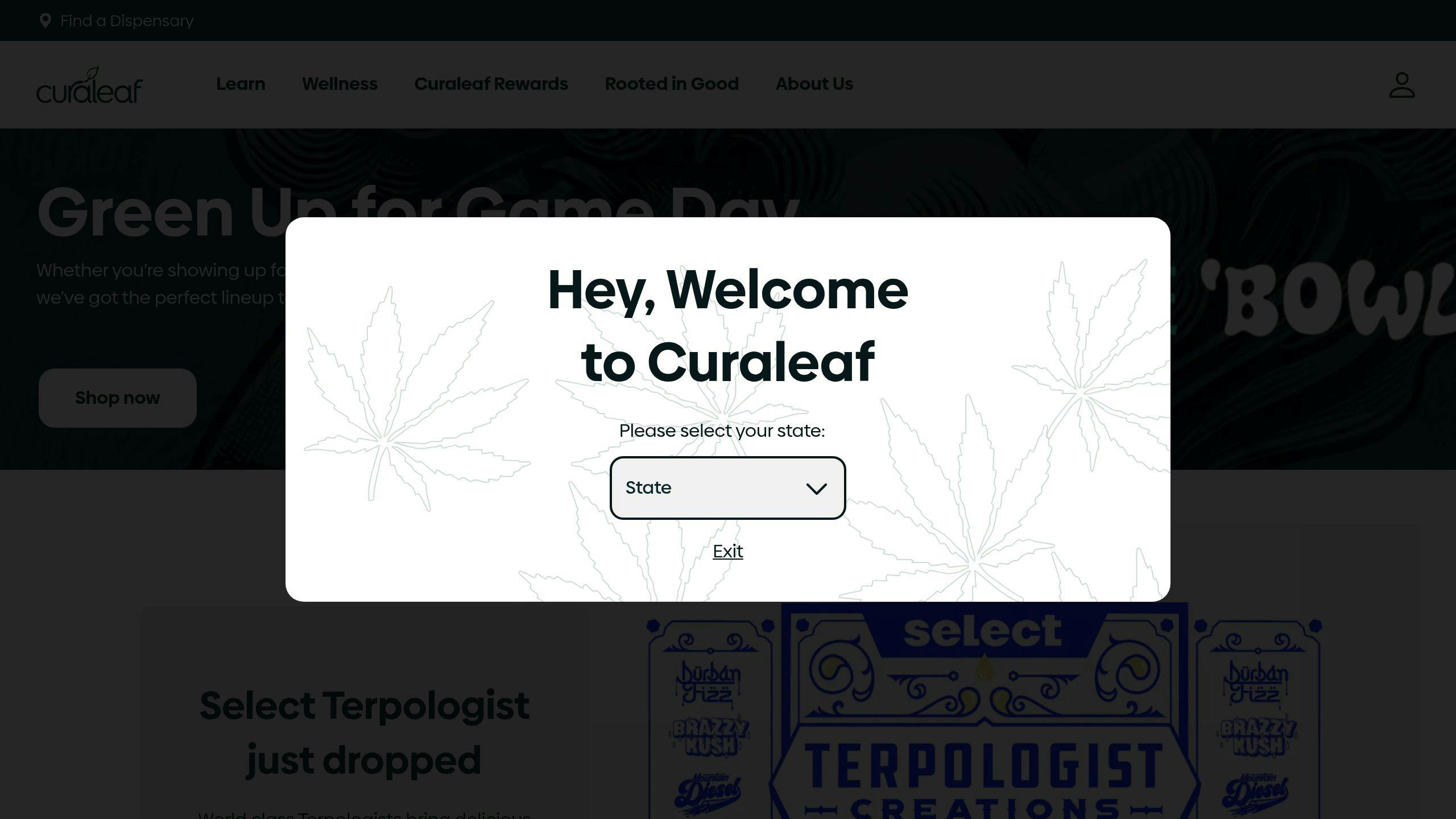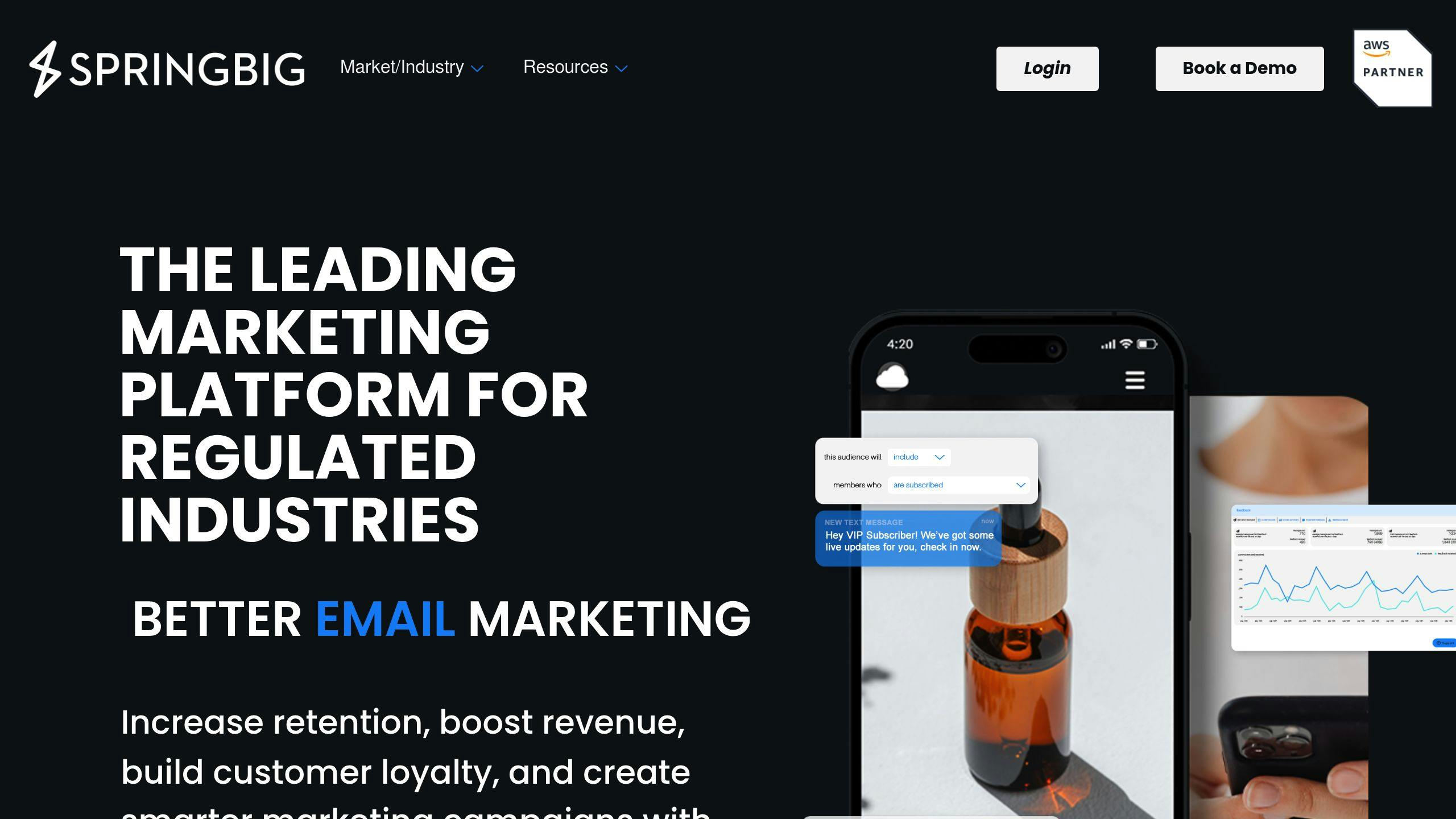The Weed Convention 2024 revealed key strategies for cannabis marketing success in a complex, regulated industry. It showcased five major trends shaping the future of cannabis marketing: programmatic advertising, digital out-of-home (DOOH) campaigns, multi-channel marketing, real-world engagement, and brand authenticity. These strategies help brands like Maitri Medicinals, Curaleaf, and Springbig stand out while staying compliant with strict regulations.
Key Takeaways:
- Programmatic Advertising: Using data to deliver targeted ads for better ROI.
- DOOH Campaigns: Leveraging digital billboards and public screens for visibility.
- Multi-Channel Marketing: Engaging consumers across platforms like Google, Instagram, and Spotify.
- Real-World Engagement: Building connections through events and conferences.
- Brand Authenticity: Transparent communication about product quality and sourcing.
The event also highlighted success stories:
- Maitri Medicinals: Early success in Pennsylvania with strong branding and compliance.
- Curaleaf: Focus on employee engagement to enhance internal culture and customer satisfaction.
- Springbig: Compliance-driven marketing in California using data and loyalty programs.
These insights emphasize balancing creativity with compliance to thrive in the cannabis market. Keep reading for detailed strategies and examples from the event.
Related video from YouTube
Maitri Medicinals: Early Success in Pennsylvania

Maitri Medicinals has shown how careful planning and market understanding can lead to success in Pennsylvania’s competitive cannabis industry. Their journey, highlighted at Weed Convention 2024, demonstrates the impact of a clear strategy and focused execution.
Securing a Medical Marijuana License
With guidance from Canna Advisors, Maitri Medicinals crafted a plan to navigate Pennsylvania’s licensing process and strict regulations.
Here’s how they approached it:
| Focus Area | Actions Taken | Results Achieved |
|---|---|---|
| Market Analysis | Conducted demographic studies and competitor reviews | Identified untapped market opportunities |
| Regulatory Compliance | Collaborated with Canna Advisors | Secured an early-stage license |
| Business Planning | Developed a detailed application | Built a strong foundation for operations |
Building a Brand in a New Market
After obtaining their license, Maitri Medicinals turned their attention to creating a strong brand identity. They used a mix of digital strategies and local community outreach to establish themselves in the market.
Employee training programs and a focus on exceptional customer service helped them stand out in Pennsylvania, where over 500,000 patients are registered for medical cannabis use [1].
"Cannabis marketers should prioritize transparency and authenticity to gain consumer trust and loyalty in this rapidly evolving market", a speaker emphasized during the convention’s branding session [1].
Maitri Medicinals’ success story shows how thoughtful planning and compliance can pave the way for growth in emerging cannabis markets. Their approach has become a reference point for others in the industry, aligning with insights shared by experts at the convention.
Curaleaf‘s People-First Approach

At Weed Convention 2024, Curaleaf highlighted how putting employees at the center of their strategy has been key to their growth. Their focus on workplace culture shows how internal efforts can lead to stronger business results.
Employee Engagement Initiatives
Curaleaf has rolled out a variety of programs aimed at creating a dynamic and supportive workplace. These efforts emphasize how internal strategies can have a direct impact on external success.
| Initiative | Purpose | Outcome |
|---|---|---|
| DE&I Task Force | Encourage diversity and inclusion | Better workplace representation |
| Employee Resource Groups | Foster community and support | Stronger collaboration across teams |
| Monthly Training Programs | Enhance management skills | Smoother HR case handling |
| Fun Fridays | Boost team morale | Higher employee satisfaction |
"Transparent processes and consistent communication have built trust and improved morale", said Chris Gaughan, Senior Employee Relations Director at Curaleaf [2].
Impact on Talent Retention
Curaleaf’s commitment to employee growth has delivered measurable results in retaining talent. By partnering with HR technology firms like HR Acuity, they’ve built a structured approach to managing employee relations.
Their focus on skill-building, efficient case management, and open communication has fostered a workplace where concerns are addressed quickly, and managers are equipped with the tools they need to lead effectively.
This approach stands out in the rapidly growing cannabis industry, where keeping top talent is often a challenge. Curaleaf’s emphasis on employee satisfaction underscores how a strong internal culture can fuel broader success in the sector.
This internal strategy lays the foundation for exploring how external marketing efforts, such as those by Springbig, can further amplify brand growth.
Springbig‘s California Marketing Strategies

Springbig has developed data-focused strategies that boost customer engagement and retention for dispensaries, all while adhering to California’s strict cannabis advertising rules. These methods, highlighted at Weed Convention 2024, show how compliance-focused approaches can lead to measurable growth in the cannabis industry.
Navigating California’s Cannabis Advertising Rules
Springbig’s results are rooted in their deep understanding of California’s advertising regulations. Their loyalty programs and text messaging tools strictly target verified, opt-in customers, ensuring compliance at every step.
| Marketing Solution | Results |
|---|---|
| Age-verified loyalty program | Achieved a 25% boost in customer retention |
| Targeted text messaging | Increased dispensary sales by 15% |
| Privacy-focused data management | Maintained a flawless compliance record |
| Location-based promotional targeting | Aligned seamlessly with regulations |
"The key to successful cannabis marketing in California isn’t just about reaching customers – it’s about reaching the right customers in the right way", says Jeffrey Harris, CEO of Springbig, emphasizing their compliance-first strategy.
Beyond Hello‘s Marketing Success

Beyond Hello’s collaboration with Springbig showcases how effective compliant marketing can be. By using targeted digital advertising, the dispensary chain improved their marketing return on investment.
Through customer segmentation, personalized promotions, and tracking engagement metrics, Beyond Hello boosted repeat visits and increased average transaction values. Their approach demonstrates how leveraging data can yield strong results while staying within regulatory boundaries.
Springbig’s work underscores that even in tightly regulated markets, data-driven, compliant marketing can deliver impressive outcomes and serve as a guide for navigating complex legal environments.
sbb-itb-430f9b7
Navigating Cannabis Marketing Regulations
The cannabis industry operates under a maze of rules that differ widely depending on location. At Weed Convention 2024, marketing professionals dove into these ongoing challenges.
Understanding Varying Regulations
Cannabis marketing rules can vary greatly. On the federal level, misleading claims and unsupported health statements are banned. Meanwhile, states like California enforce strict rules such as keeping ads at least 1,000 feet away from schools and youth centers. In Colorado, advertising is allowed but must include specific disclaimers [1].
The digital world adds another layer of complexity. Google Ads has tough restrictions on cannabis-related content, while platforms like Facebook and Instagram permit limited ads, but only under certain conditions [3]. This means marketers need to customize their approach for each platform while staying within regulatory limits.
Companies like Maitri Medicinals, Curaleaf, and Springbig have shown how crucial it is to understand and work within these frameworks. As the rules continue to shift, privacy concerns are becoming just as important for staying compliant in cannabis marketing.
Balancing Privacy and Advertising
Privacy is now a key consideration in cannabis advertising. One growing trend is digital out-of-home (DOOH) advertising, which saw spending in the U.S. rise by 36.9% in 2022 [1].
To navigate privacy requirements, marketers are turning to tools like programmatic advertising and CRM systems. These tools help ensure compliance by using anonymous data, managing consent properly, and handling data securely. At the same time, educational content and clear, relatable messaging have become essential for meeting both compliance standards and consumer expectations.
Creating Compliant Cannabis Campaigns
Navigating the cannabis industry’s regulatory maze requires brands to craft strategies that are both effective and compliant. Let’s look at how cannabis brands can reach their audience while staying within the rules.
Targeting the Right Audience
Using programmatic advertising combined with dynamic creative optimization (DCO), cannabis brands can serve tailored, compliant ads to specific groups. Digital Out-of-Home (DOOH) platforms, like digital billboards and in-store displays, offer another way to connect with consumers at important moments. These tools not only help with visibility but also create opportunities to educate audiences about products. Once the target audience is clear, brands need to focus on crafting campaigns that are engaging yet fully compliant with regulations.
Creative Compliance Strategies
To connect with their audience, many cannabis brands lean on user-generated content and video marketing. This approach taps into organic engagement while staying within platform-specific rules.
DOOH advertising, programmatic display ads, and opt-in text marketing are popular methods for balancing creativity with compliance. These tactics have shown measurable success, such as higher returns on ad spend (ROAS) and improved customer interaction.
A standout example is the use of loyalty programs paired with targeted advertising. Springbig’s digital ad network, for instance, enables dispensaries to directly market to loyalty program members. This ensures communication reaches an age-verified audience and delivers trackable outcomes [4].
"Dynamic programmatic display advertising has consistently delivered returns on ad spend exceeding three to four times the initial investment", according to industry data presented at the convention [1].
Successful campaigns focus more on educating and informing consumers rather than aggressively selling. This approach not only builds trust but also ensures compliance with strict industry regulations.
Key Takeaways from the Convention
Digital advancements like programmatic advertising and DOOH are now central to thriving cannabis marketing strategies [1].
Lessons for Cannabis Marketing Growth
The convention spotlighted the strategies of brands like Maitri Medicinals, Curaleaf, and Springbig, offering key insights for the industry’s growth. A major focus was on how brands are evolving by integrating tools such as programmatic advertising, DOOH, and text messaging while staying compliant with regulations.
Curaleaf’s "people-first" approach stood out as a success story. Their monthly manager training sessions have strengthened their internal culture, which directly enhances customer experiences. As shared by their HR director during the event:
"Empowering our managers with transparent processes has significantly boosted employee morale and customer satisfaction" [2].
Key strategies driving cannabis marketing include:
- Data-Driven Decision Making: Leveraging analytics to target specific audiences while remaining compliant.
- Multi-Channel Integration: Merging traditional and digital marketing for broader reach.
- Educational Content: Prioritizing consumer education over aggressive sales tactics.
- Transparent Engagement: Building trust through openness and meaningful connections.
The event emphasized that the most successful cannabis brands are those combining programmatic advertising with authentic storytelling.
"Dynamic programmatic display advertising has consistently delivered returns on ad spend exceeding three to four times the initial investment", according to industry data shared at the convention [1].
Moving forward, success in 2024 will depend on balancing cutting-edge strategies with regulatory compliance. These insights lay the groundwork for tackling industry challenges, which are explored further in the upcoming FAQs.
FAQs
What are the federal cannabis advertising regulations?
Federal cannabis advertising laws, enforced by the FTC, strictly prohibit misleading claims and require that all product descriptions be supported by scientific evidence. For example, brands cannot make claims that cannabis products cure, prevent, or treat medical conditions.
Brands like Maitri Medicinals, Curaleaf, and Springbig have shown that it’s possible to market effectively while staying within these strict boundaries. Springbig’s success in California demonstrates the importance of practices like age verification, using research-backed claims, and following location-specific regulations.
Their strategy emphasizes educational content and clear communication, which helps build consumer trust while driving growth. Instead of relying on aggressive sales tactics, cannabis brands should prioritize accurate, informative content. To ensure compliance, all marketing materials should go through a detailed legal review before being released.
Ultimately, success in cannabis advertising hinges on following federal rules and aligning with state-specific regulations. This approach not only builds trust but also helps brands grow responsibly in a competitive industry.

